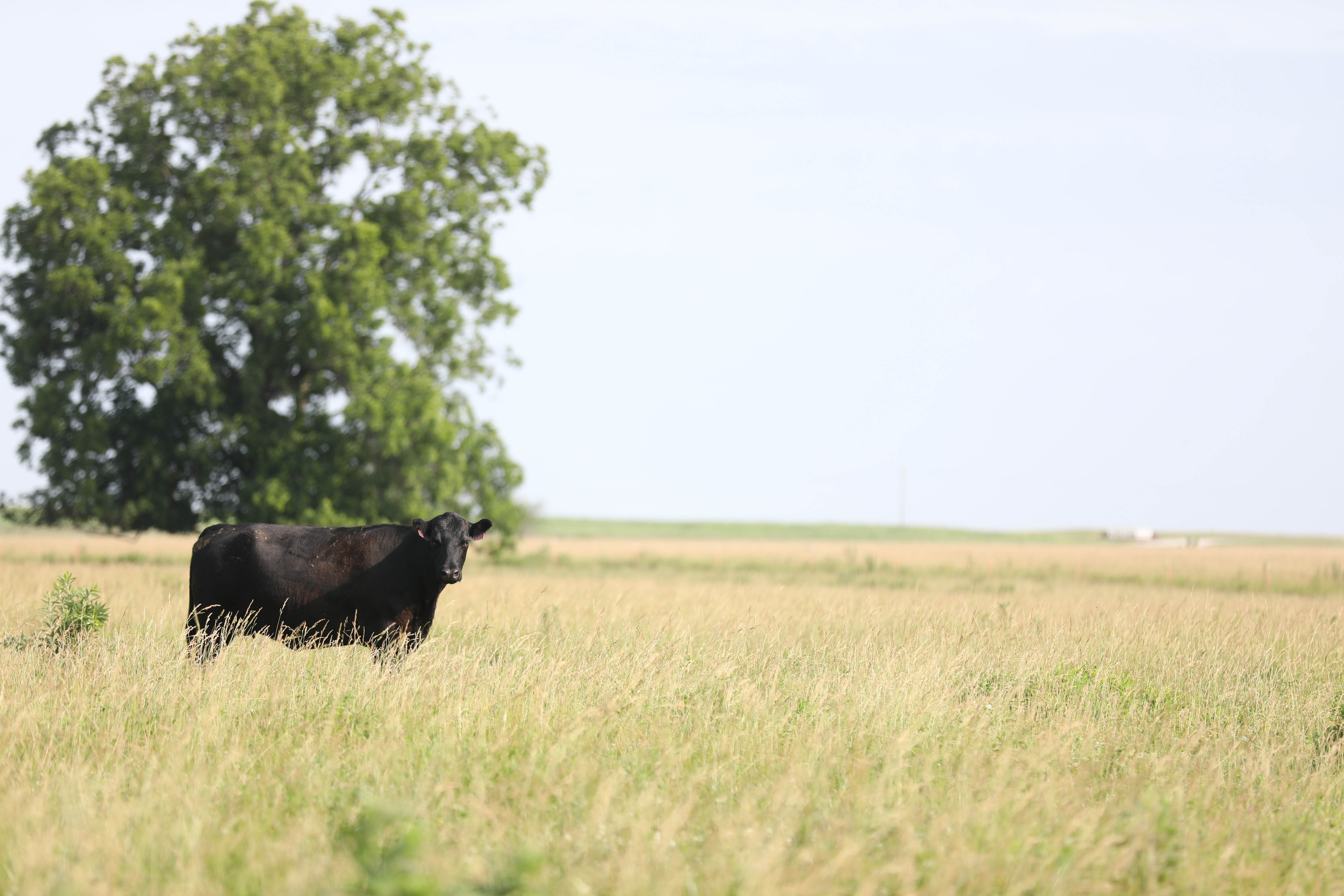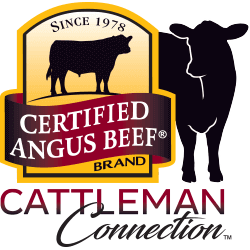
Not perfect yet
Marrs Ranch honored with CAB 2009 Commitment to Excellence Award
by Miranda Reiman
People on the Marrs Ranch, Whitewood, S.D., say their cows have a long way to go. They’re not just talking about the trip to distant summer ranges, or finding their way to hay in a blizzard.
They’re talking about imperfections in their 600 commercial Angus cows that others can’t see. You could scarcely find fault in the 19 years of records from feeding their calves. But if you knew every nuance and measured against perfection, you might agree there is still work to be done.
It will get done. The cattle already gain and convert at rates often starting with a 5, and grade more than 95% Choice with up to 80% Certified Angus Beef ® (CAB®) brand acceptance. But the Marrs Ranch will find ways to improve them. That’s why the brand honored the family with the 2009 Commercial Commitment to Excellence Award at the CAB annual conference in Scottsdale, Ariz., Sept. 18.
Dan and Anna Marrs, with their young son Matthew represent the cattle specialists on the diversified operation northeast of the Black Hills. It includes older brother Paul, the hay and machinery specialist, along with his wife Linda and their children, and the wisdom and experience of parents Ray and Alice.
Ray passed away in August, leaving a legacy of service and leadership from community to cattle. The foundation he helped build included a switch from Hereford to Angus bulls in 1978, and the courage to feed some of the first calves in 1980, when the market fell to barely 50 cents a pound (lb.).
“Our buyers said we might as well try feeding them,” Paul says. “So we did, and then turned around and got 70 cents for the fats. That was a good ticket.”
Price didn’t always work in their favor, but the Marrs family soon noticed their cattle were champion performers, with steers that could gain 5 lb. per day. Aiming for top genetics, Dan admits to buying a few of the wrong bulls in the 1990s, before the Angus breed had today’s balance.
Records show what works and what doesn’t produce “cows we can live with,” he says. Experience more than records revealed some off-track “bull families,” daughters of certain bulls with problems in common. “We don’t live with them. If a female gives us any trouble, she can’t stay here,” Dan says.

Cows that do stay are in groups of 100 to 150; they also stay with the same bulls across several years, he explains. Cow capabilities are proven, so any problems come back to the battery of 30 bulls. Pasture mating is the rule, but heifers are usually synchronized and artificially inseminated (AI), followed by ample bull power. That resulted in 97% bred in 2008.
In all the years of custom feeding, the Marrs Ranch had not seen much individual carcass data until they began sending yearlings to a standout CAB partner yard, Chappell (Neb.) Feedlot, in 2004. Ultrasound sorting there has been especially helpful in finding outliers, Dan says.
After building a successful record feeding their cattle, manager Tom Williams nominated his customer for the CAB award using few words “– Marrs cattle excel both in performance and carcass value –” and an added page of data to prove it.
The 2007 calf crop of 260 steers posted an average daily gain (ADG) of 4.55 across nearly five months, with a dry-matter conversion rate of 5.9 lb. of feed to gain, 94% Choice and 51% CAB. The 106 heifers culled from replacements were a couple of points back in performance but 68.3% CAB.
“There’s no other sorting here at the ranch,” Dan says. “You’re seeing the good, the bad and the ugly; we feed them all.” He credits Williams, along with reputable Angus seedstock suppliers, family, longtime top hand Raymond Riesland and veterinarian Jim Myers for keeping the herd on track.
Dan has taken a greater interest in carcass traits since touring Cargill plants in Nebraska and Colorado several years ago, and then visiting with the people. “As we talked, I just realized that the packers have always been painted as our enemies, but if you try to get along with them, you can learn a lot,” he says.
Straightbred Angus cattle have allowed the Marrs family to develop just the kind of cows and performance results desired. “Crossbreeding may work for some people, but we know what our Angus cattle can do in the feedlot, as replacement heifers and in our herd. CAB is really a bonus, and it’s a benefit I don’t see attached to any other breed,” Dan says.
“The good beef for a superior dining experience starts on the ranch. You’ve got to know what you produce,” Dan says. It takes hard work, every day, and all family members pulling together. “But we also have fun out here,” he say. “Somehow, God has let us do what we enjoy doing.”
